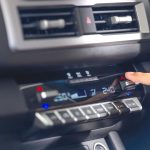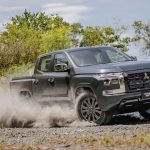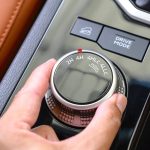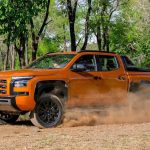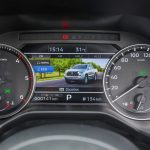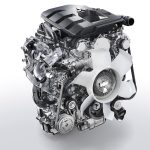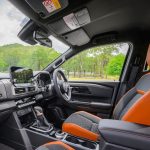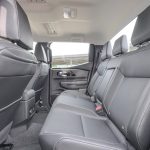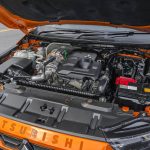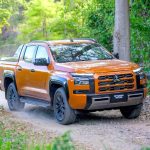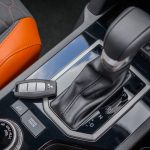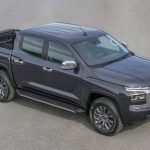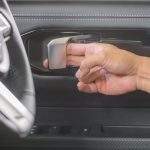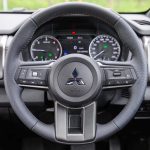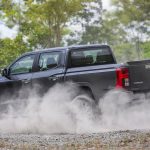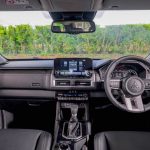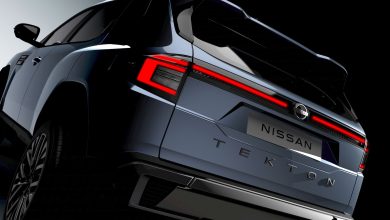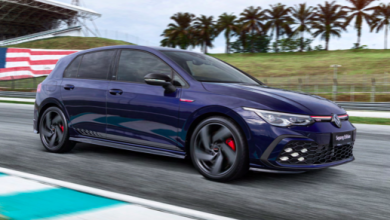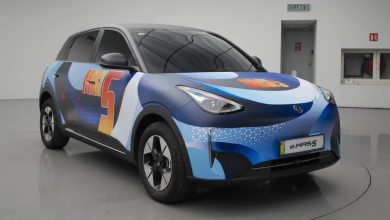Mitsubishi Triton All New Model Launched In Thailand
Mitsubishi Motors Corporation premiered the fully redesigned Triton, known in some markets as the L200, one-ton pickup truck in Bangkok, Thailand.
Meet the all-new Triton pickup truck which is scheduled to be rolled out in ASEAN nations and Oceania regions very soon.
Taking the game right to the doorstep of the all new Ford Ranger and Isuzu D-Max, this latest Triton has a larger body with a newly developed 2.4L clean diesel turbo engine sitting under its stylish front hood.
This diesel engine significantly boosts environmental performance and power. The ladder frame, suspension and other main components have been newly developed uniquely by Mitsubishi Motors, and road performance has been greatly enhanced through features such as upgraded drive mode and electronically controlled Active Yaw Control (AYC) combined with Super Select 4WD-II system.
With the adoption of Adaptive Cruise Control (ACC) among other new safety features and emergency support using connected car technology, safety and comfort has been greatly improved not only in terms of the truck’s hardware, but also in terms of its software.
The all-new Mitsubishi Triton will be launched in three body types depending on the intended use which is a double-cab type with two rows of seats offering both the comfort of an SUV and the utility of a pickup truck, a basic single-cab type with one row of seats, and a club-cab type with cargo space behind the front seats that also enables reclining.
Tough ladder frame and high-efficiency clean diesel engine
The newly developed ladder frame has a 65 percent greater cross-sectional area than the previous model, achieving a bending rigidity increase of 40 percent and a torsional rigidity increase of 60 percent.
Furthermore, weight increase has been minimized by increasing the ratio of high-tensile steel used. As well as offering significantly better road performance and ride comfort, the all-new Mitsubishi Triton also boasts increased robustness by improving durability during loading and energy dispersion in the event of a collision.
The body is also lighter than the previous model through the use of a new 1180 MPa high-tensile steel material.
The newly developed 4N16 clean diesel engine comes in three different output specifications to meet different purposes. The high-output version is equipped with a new turbo charger and new combustion system, providing a flat maximum output of 150 kW and maximum torque of 470 Nm from approximately 1,500 rpm, enabling highly-responsive driving with abundant torque in the range of practical use.
There are two versions of the standard specification which is one with an engine that has a maximum output of 135 kW and a maximum torque of 430 Nm, and one with an engine that has a maximum output of 110 kW and a maximum torque of 330 Nm. Both have a variable geometry turbo charger that performs variable control of turbine capacity.
The all-new Triton comes with either a six-speed automatic transmission with the highly acclaimed Sports mode from the previous model, or a six-speed manual transmission with shift-by-wire that reduces vibration directly transmitted from the engine and improving comfort.
Improved road performance by newly developed suspension and a mature 4WD system
The 4WD system enables the driver to easily shift to 4WD mode while driving by using a dial selector. The all-new Triton continues to use Mitsubishi Motors’ Super Select 4WD-II and Easy Select 4WD systems, and Super Select 4WD-II is equipped with a center torque sensing Limited Slip Differential (LSD) that distributes driving force at a ratio of 40% to the front and 60% to the rear, thus ensuring both traction performance and cornering performance.
Models equipped with the Super Select 4WD-II system can select from the four options of 2H (rear-wheel drive), 4H (full-time four-wheel drive), 4HLc (locked center differential) and 4LLc (locked center differential with lower gears), and have seven drive modes including on-road modes, an increase over the four off-road modes of the previous model.
Along with Normal mode that is available in all four-wheel drive modes, 2H offers Eco mode for prioritization of economy, 4H offers Gravel and Snow modes, 4HLc offers Mud and Sand modes for traction performance, while 4LLc provides Rock mode, allowing drivers to select the optimum drive mode for any road condition.
The 4WD modes available for selection in vehicles equipped with Easy Select 4WD are 2H (rear-wheel drive), 4H (locked center differential), and 4L (for low-gear driving).
AYC is newly adopted for models equipped with the Super Select 4WD-II system. It improves cornering performance by applying light braking to the inside front wheel when cornering. Both the two-wheel and four-wheel drive models are equipped with active LSD (brake control type).
By applying the brake to a spinning wheel and distributing the driving torque to wheels gripping the road surface, it improves safety on slippery surfaces while also providing a sporty driving experience.
Active Stability & Traction Control (ASTC) that improves stability on winding roads is standard equipped on all models. Other systems include Hill Descent Control (HDC), which maintains a set speed on downhill slopes to enable driving with confidence, and Hill Start Assist (HSA), which prevents roll-back in hill starts.
The newly developed suspension retains a double wishbone structure for the front suspension, and prioritizes reliability and durability. The upper suspension mounting arm has been moved higher to increase the stroke by 20mm, providing improved road-holding and ride comfort.
The rear suspension provides greater ride comfort while retaining its strength and uses a lighter leaf spring system together with thicker shock absorbers.
While beefing-up the body size, the increase in turning radius has been minimized, and driving has been made easier by using a hood shape that lets the driver see the hood line.
For the high-output engine model, an electric power steering is adopted, which enables better control by providing more assistance in the low-speed range, while it increases feedback in the high-speed range to provide peace of mind for the driver.
It also takes safety and comfort into account through its reduction of kickback from the road surface and tuning for off-road driving or towing.
Beast Mode design concept
The all-new Triton combines agility with the Mitsubishi Motors’ robust design to create an imposing look while expressing the toughness and powerfulness expected of a pickup truck.
The front face design concept of Dynamic Shield that expresses powerful performance and the peace of mind protecting both the people and the car is optimized for a pickup truck through a powerful form based on a robust, three-dimensional front grille and fenders, and a protector that emphasizes this form.
The daytime running lights featuring three L-shaped LED lights resemble a sharp gaze of a hawk, and in combination with the three-dimensional 3-light headlights below them, the design gives the all-new Mitsubishi Triton an overwhelming presence.
The horizontally-themed body sides are composed of large, solid surfaces that emphasize the robust doors, while contrasting with the sharply overhanging fender panels to tighten them and make them appear wider, emphasizing stability and toughness.
While ensuring the cargo bed is of an ample size, the solid surfaces continue along the side of the body up to the rear end. T-shaped tail lights on both sides emphasize width while also robustly displaying the sturdy rear design.
Functional design has been incorporated in all aspects to drastically increase utility, including a cabin shape and rear spoiler that improve aerodynamics, more durable door handles that are now bigger and easier to grip, and wider side steps with improved water drainage.
The instrument panel is designed with the Horizontal Axis concept, which uses horizontally-themed and strong shapes to allow drivers to easily see changes in the posture of the vehicle when driving.
With a nod to professional use, soft pads have been incorporated in the main areas that protect passengers to ensure utility. In terms of design, the interior uses many geometric shapes and metallic elements to create a high-contrast, modern space.
Particular attention has been paid to visibility for the monitor, meters, and switches that make use of contrast, and the selectors, dials, and switches all have the optimum level of sensitivity to allow them to be operated while wearing gloves.
The steering wheel, grips, and door handles have all been designed based on an approach called Mitsubishi Touch, with a focus on grip comfort and sturdiness.
The 6A/T and 6M/T center console has a cup holder that can accommodate two large cups, and the console box can hold four 600 mL plastic bottles. Taking professional use into account, the console box in the 5A/T model is capable of holding tablets and files in addition to being a cup holder.
The glove box, smartphone holder, and other storage for small items are of an ample size that enables easy use even when wearing gloves, and the instrument panel and center console have USB A and C sockets for charging devices, as well as a wireless charger at the bottom of the center part of the instrument panel.
Newly rolled out body colors are the vivid and metallic Yamabuki Orange Metallic and the Blade Silver Metallic that offers increased brilliance. The lineup also includes the high-quality basic colors – White Diamond, Solid White, Graphite Gray Metallic, and Jet Black Mica.
With the highest trim level, the front grill is the same color as the body, while the door mirrors, Dynamic Shield garnish, plated components including the door handles, bumper, and other parts are black, and the underside of the front, sides, and rear is dark titanium.
A styling bar on the black roof rails, over fenders, and cargo bed brings a sharper look. The use of black as the base color for the metallic embellishments in the interior brings sleekness, while orange accents bring a sense of class and sharpness.
Improved basic performance as a pickup truck
The cargo bed height has been lowered by 45 mm to 820 mm compared to the previous model, and the upper surface area of the bumper corner has been enlarged and reinforced with a frame to be used as a foot space, thereby improving practicality.
The front seats provide firm lower back support while the shoulder areas provide ease of movement with an open shape, which helps to reduce driver fatigue. The hip point has also been moved 20 mm up compared to the previous model and an upright posture has been adopted to improve visibility from inside the vehicle.
In addition, ingress and egress have been made easier by designing the A-pillar to be more vertical to widen the door openings and widening the side steps while making them a shape that reduces the risk of slipping.
The all-new Mitsubishi Triton now comes equipped with Adaptive Cruise Control (ACC) that tracks acceleration, deceleration, and stopping of the vehicle in front, and cruises while maintaining a preset distance between vehicles.
Advanced safety features have been enhanced along with the retention of Forward Collision Mitigation system (FCM), Blind Spot Warning (BSW) with Lane Change Assist (LCA), and Rear Cross Traffic Alert (RCTA) among others.
Mitsubishi Connect makes the experience of owning and driving a car more comfortable and enjoyable. For driver safety, a request for help can be made to a call center with the touch of a single button in the event of an accident or breakdown, while also being capable of automatically reporting the deployment of an airbag.
By linking with a smartphone, Mitsubishi Connect enables a car finder function that displays the location of a parked Triton. Users can also check the remaining fuel volume and oil state, drive history, and other aspects of the vehicle’s state.
Furthermore, remote operations let users switch on the air conditioning before they get in this latest Triton and also operate the headlights and horn. Smartphone linking uses the cellular network, so users can receive information from their car even if they are far away, provided they are in an area with cellular coverage.
To improve maintainability, the location of the drain bolt has been changed to enable engine oil to be replaced without having to remove and replace the under-cover, and for 4WD/2WD High Riders, service hole size has been increased to enable garage jacks to be used without an attachment.
And with gear oil replacement being unnecessary in the six-speed manual transmission model among other improvements, maintenance is becoming increasingly unneeded.
A wide range of accessories are available for this latest Triton, from protectors to dress-up accessories. The sport bar, fender arch moldings, and side door garnishes emphasize the solid image, and the grille emblems tighten the look. A bed liner, which is indispensable for pickup trucks, is also available.

